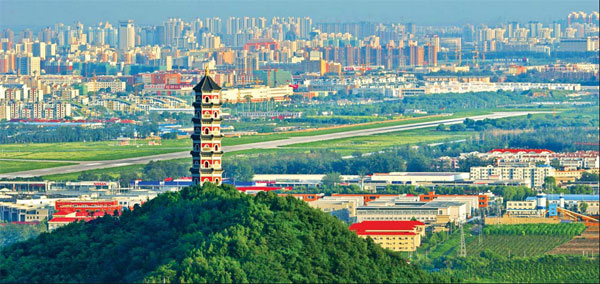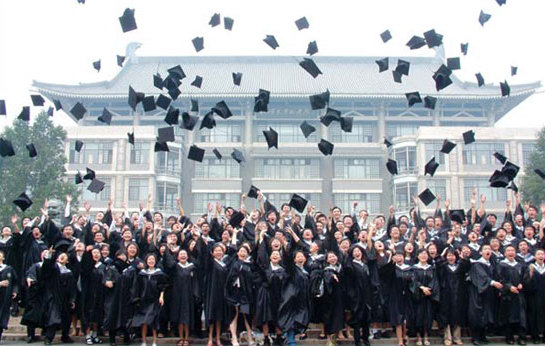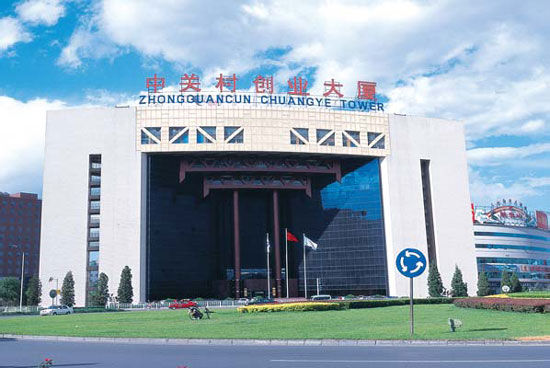Haidian Science Park blazes trails for tech zones
Updated: 2012-11-09 07:52
By He Bolin (China Daily)
|
|||||||||||
|
The Yufeng Pagoda, built in the Qing Dynasty ( 1644-1911), in a park-like setting provides a sharp contrast to the modern highrise architecture of the Zhongguancun area in the background. Photos provided to China Daily |
The Zhongguancun Haidian Science Park is likely the first place that comes to mind when people talk about the development of China's high-tech zones because it epitomizes the history of innovative industrialization in the country while serving as a model for future development.
It became the birthplace of China's high-tech zones, when its predecessor, China's first national high-tech industrial development zone, was established in 1988 at the site of what is now the world-famous Zhongguancun electronics street.
Since then, it has served as an important driving force behind China's high-tech industrial revolution and also a guidepost for all high-tech zones around the country. Now, after 20 years of development, it has become the symbol of China's knowledge economy and an incubator for world innovation.
With the most-famous conglomerates and elites of all industries gathered in one place, Zhongguancun has risen as one of the most influential areas in China, and it is synonymous with advanced technology.
As for those pioneering entrepreneurs, they have meaningful memories about the technology hub.
In the 1970s, researchers from China's leading science and technology institutes located in the Zhongguancun area began to come out of the labs and start entities for commercializing research achievements .
This trend paved the way for success today, and since then, Zhongguancun has always been a center of reforms related to science, technology and private economy.
By the end of 1987, there were already 148 technology companies registered in Zhongguancun. The embryo of the Zhongguancun electronics street started taking shape, and a new trend toward market-oriented industrial development was established through the integration of technology, industries and trade.
In the following year, the State Council officially approved China's first national high-tech industrial development zone, a 100-square-kilometer area in Beijing's Haidian district centered on Zhongguancun, which was known at the time as the Haidian Experimental Zone.
After a decade of expansion, the central government in 1999 made the development of Zhongguancun a national strategic priority. The zone was renamed the Zhongguancun Haidian Science Park, after which it became a center for the research and development of advanced technology as well as business and trade.
In March 2009, the zone became China's first national domestic innovation demonstration area, accomplishing its transformation from a research center into a source of original innovation. The Haidian Science Park emerged as the most important part of the area.
For more than 20 years, authorities of the Zhongguancun Haidian Science Park have fully utilized the advantages of local scientific resources, stressed innovation and continued to attract an ever-increasing pool of talent. Now the park serves as a major driver of growth in Zhongguancun.
Policy, facility support
From a policy perspective, the park has introduced equity incentives and other favorable policies, which 350 enterprises and entities had utilized by 2010. In the meanwhile, the Beijing municipal government transferred 19 of its administrative examination and approval powers to Zhongguancun and abolished another 24 to streamline various official procedures for high-tech enterprises, such as accreditation, patent filing and enforcement, and applications for Beijing's work and residence permits.
To help alleviate financing difficulties, the core area of Zhongguancun has attracted nearly 1,000 financial institutions specializing in services for high tech industries, including foreign banks, equity investment groups and venture capital firms.
Some 172 equity investment firms have a combined total of more than 100 billion yuan ($16.2 billion) of funds under management, forming a central high-tech financing block, with the PE Tower as its center.
And the core zone has also been accumulating professional service firms at a faster pace, such as an enterprise incubation system that has been established for returned scholars from overseas, universities and high-tech firms.
This financing is coupled with a wealth of scientific research resources concentrated in Zhongguancun, which currently has more than 80 universities, 251 scientific and research institutes and 62 national key laboratories, accounting for 36 percent of the country's total.
Furthermore, local authorities have invested in expanding space, building infrastructure and improving the environment to further develop and strengthen high-tech industries.
Since 2011, six projects for high-tech industry clusters and software parks have been completed. Another 25 are under construction, and 34 are scheduled to start this year, with investment of 6.71 million yuan.
'Bringing in, going out'
The zone has not achieved such remarkable progress through isolation from the rest of the world. It is the result of vigorously carrying out what local leaders call the "bringing in and going out" strategy.
Enterprises in the zone have been encouraged in various ways to integrate and use international resources.
Data from 2010 shows that 6,200 people working in the park have international study experience, while many Fortune 500 enterprises, like Microsoft, AMD and Sony, have headquarter-level branches and research centers in the park.
Domestic enterprises in the park have also had great success through participating in the world industrial system.
For example, private high-tech enterprises, like UFIDA and Red Flag Software, have set up joint research and technology centers with well-known multinationals, and more than 40 enterprises in the park, like Baidu and VanceInfo, have landed on the overseas capital market.
Fruitful achievements
After decades of development, Zhongguancun is renowned around the world for its technological success and innovative products.
The zone was the birthplace of technologies used in the Dawning Supercomputer, the Shenzhou VII spacecraft, the Chang'e I lunar orbiter, low temperature nuclear heating reactors and high-temperature gas-cooled reactors.
The park's membrane bioreactor has caught up to the world level, and its other technologies, like smart phone operating systems and TD-LTE chips are nearing an advanced level compared to their global counterparts.
All these domestically developed products and technology have helped to bolster China's major projects.
In 2011, the number of submitted patent applications in Haidian, the Beijing district that houses the park, for the first time surpassed 30,000, reaching 32,412 and accounting for 41.6 percent of Beijing's total, a 30.3 percent annual increase.
The zone has won recognition from the government for its many technological achievements. More than 90 institutions or individuals from the park received China's highest science and technology prizes, accounting for 30.5 percent of the country's total.
With ongoing product innovation and improvements, enterprises in the park have also raised the bar by developing new industrial standards, of which 66 have become internationally applied, and more than 590 were used as national standards. For example, TD-SCDMA and TD-LTE-Advanced have become global 3G and 4G standards, respectively.
All these aspects have helped encourage a boom of technological trade. The core area has had its technological trade grow by 35.5 percent annually from 2005 to 2010 while its proportion of the country's total increased from 12.79 percent to 23.2 percent.
The highly competitive electronic and information industry in the park has seen its revenue increase from 172.7 billion yuan to 436.9 billion yuan during the same period.
By the end of the 11th Five-Year Plan period (2006-10), the economy of the core area of Zhongguancun had expanded considerably, with gross revenue surpassing 705.2 billion yuan, 2.8 times the figure at the end of the previous 10th Five-Year Plan period (2001-05). In 2011, the revenue continued to grow to 877 billion yuan.
Now the zone is home to 4,142 national high-tech enterprises, accounting for 60 percent of those in Beijing and one-tenth of the country's total. It is developing into a science and technology center with growing global influence.
By 2020, revenue of the zone is expected to exceed 4 trillion yuan, while its energy consumption per unit of GDP will be reduced by 40 percent of 2010 levels.
hebolin@chinadaily.com.cn
|
Haidian district has abundant scientific research resources, including more than 80 universities, 251 scientific and research institutes and 62 national key laboratories. Pang Zhengzheng / for China Daily |
|
The Zhongguancun Business Initiation Center. |
(China Daily 11/09/2012 page15)
Related Stories
Haidian Forum: Strategy to share breakthroughs needed 2012-11-08 07:51
Growing center for international tech transfer in Haidian 2012-11-08 07:51
Haidian mulls ways to finance future tech 2012-09-12 10:04
Innovation boosts Haidian's growth 2012-09-11 11:08
Haidian, top hardware at core of Xiaomi phones 2012-09-11 11:06
Haidian investment effort named tops at Doha forum 2012-05-30 08:01
Today's Top News
President Xi confident in recovery from quake
H7N9 update: 104 cases, 21 deaths
Telecom workers restore links
Coal mine blast kills 18 in Jilin
Intl scholarship puts China on the map
More bird flu patients discharged
Gold loses sheen, but still a safe bet
US 'turns blind eye to human rights'
Hot Topics
Lunar probe , China growth forecasts, Emission rules get tougher, China seen through 'colored lens', International board,
Editor's Picks

|

|

|

|

|

|








